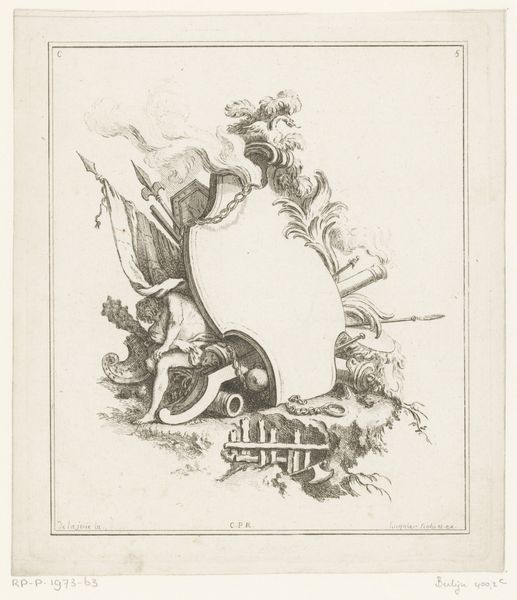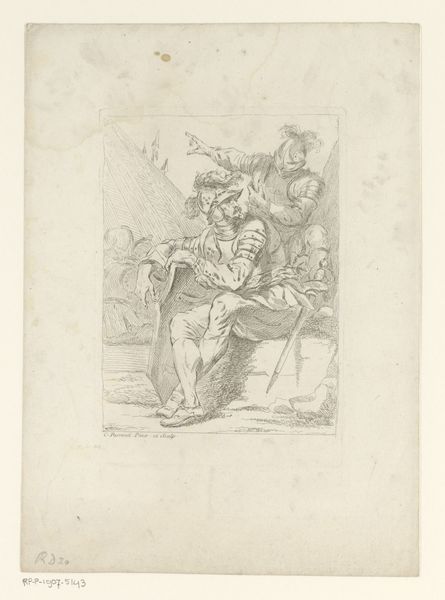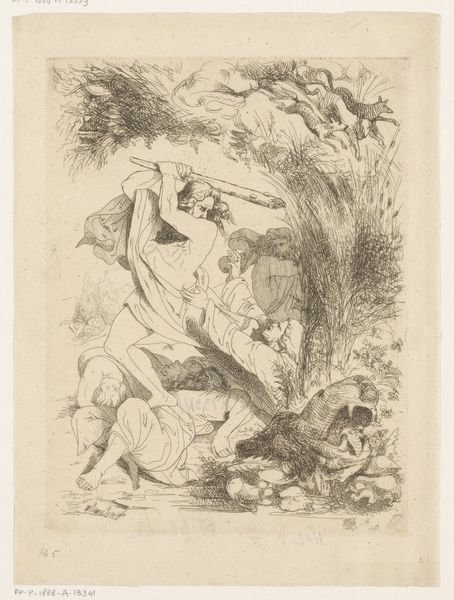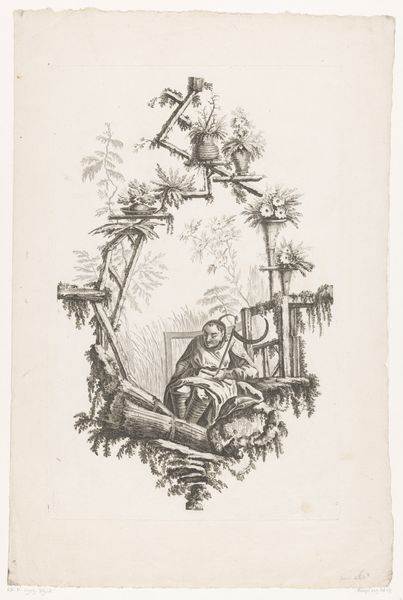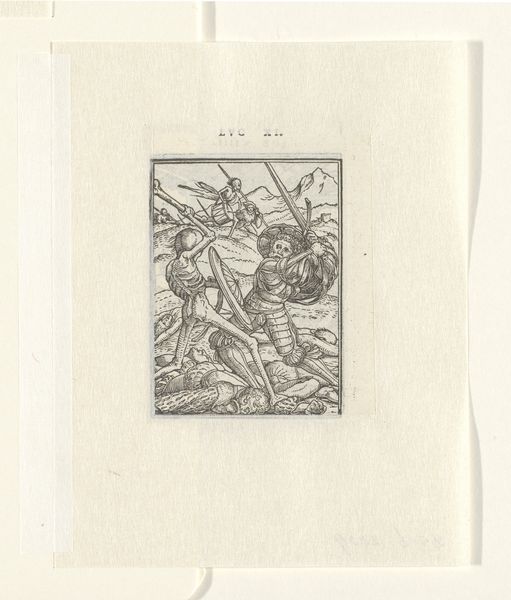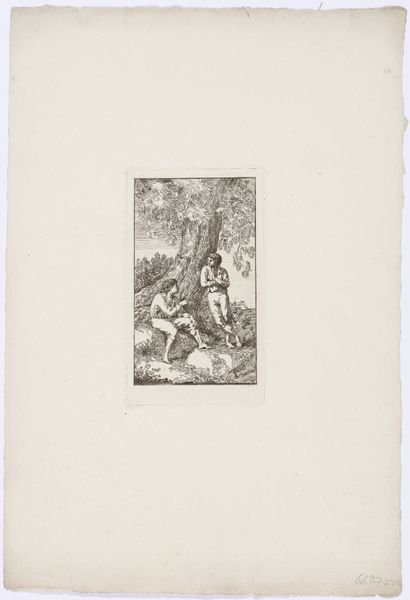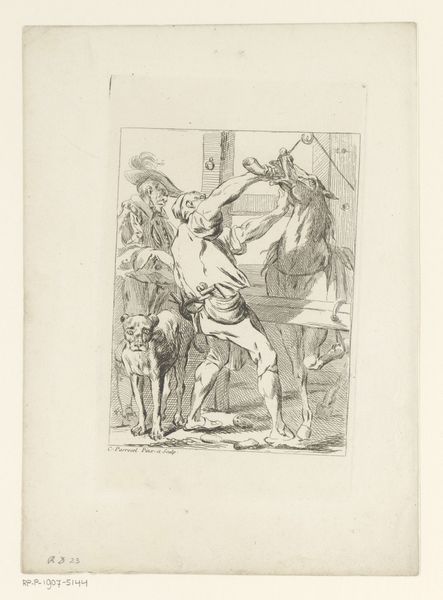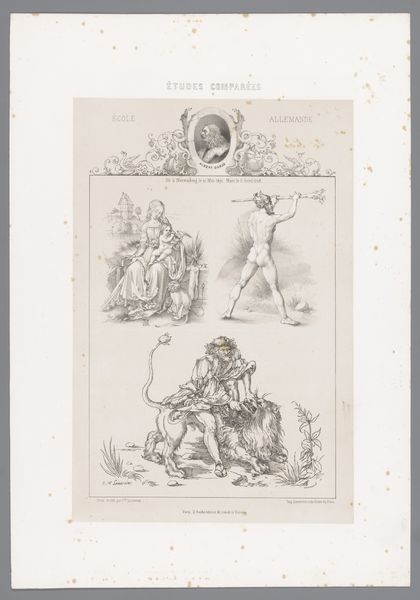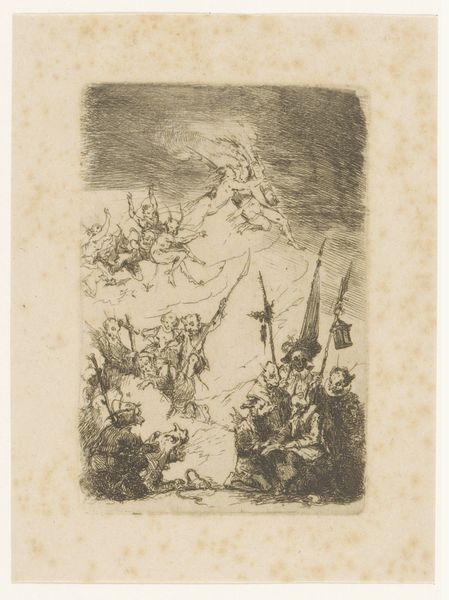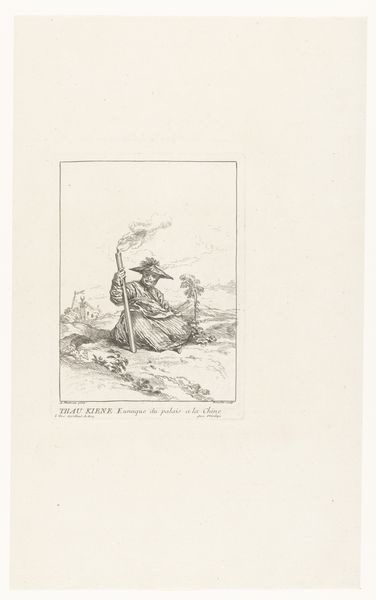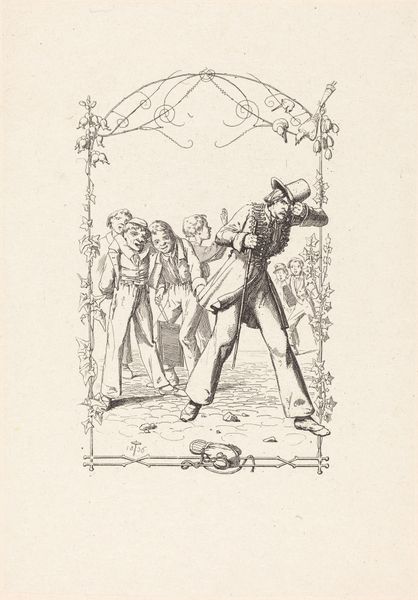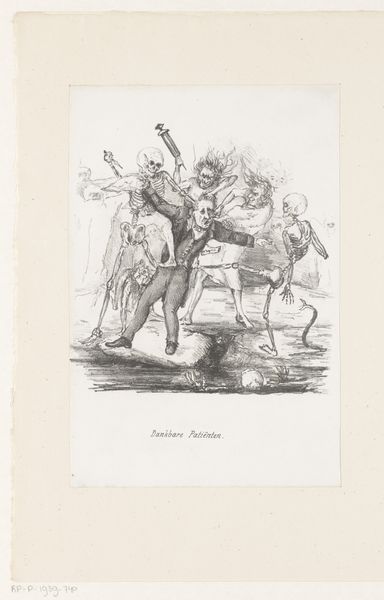
print, engraving
# print
#
figuration
#
romanticism
#
history-painting
#
engraving
Dimensions: plate: 18.2 x 12.4 cm (7 3/16 x 4 7/8 in.) sheet: 35.7 x 26.5 cm (14 1/16 x 10 7/16 in.)
Copyright: National Gallery of Art: CC0 1.0
Curator: Let's discuss Adolf Schrödter's "Peter Schlemihl with the Bag of Money," an engraving from 1836. What are your initial impressions? Editor: It feels melancholic, doesn't it? The figures, especially the fellow with the dramatic posture, seem caught in a narrative of loss or misfortune. The crisp lines create an interesting contrast. Curator: The linear precision contributes to its overall formal elegance. Consider the placement of the figures within the frame and their relationship to one another. The man holding his shoe is dynamic, almost caught mid-fall, whilst his companion stands passively still. Editor: Precisely. It evokes ideas of displacement. The central character appears in crisis, in a seemingly in-between space, neither grounded nor entirely detached. This feels like a broader statement on economic precarity. Curator: Schrödter skillfully employs a stark contrast between light and shadow to sculpt forms and suggest depth within the confines of the engraving, which in turn lends emotional gravity. Notice the carefully constructed landscape acting as a stage for these figures. Editor: Yes, but I see the landscape as symbolic of the protagonist’s mental or societal terrain, reflecting the tumultuous social conditions following the Napoleonic Wars and the rising anxieties around class and status in Germany at that time. His struggle feels incredibly timely and politically relevant, even today. Curator: Your interpretation adds layers, of course. I’d rather propose we admire Schrödter's technical prowess, transforming simple lines into expressive characters imbued with depth. He makes the very medium—engraving—speak. The formal elements speak so distinctly of their age. Editor: While acknowledging its historical significance as an engraving rooted in Romanticism, I think that looking at Schrödter's print through a contemporary lens allows us to contemplate persistent inequities and challenge established viewpoints. The art demands continuous reassessment. Curator: Perhaps there is some mutual benefit in engaging with both readings—recognizing artistic intentionality and simultaneously interpreting socio-political resonance within its context. Editor: Agreed. By engaging on multiple levels, we start appreciating "Peter Schlemihl with the Bag of Money" not only as a historical piece but as a poignant portrayal of the human experience.
Comments
No comments
Be the first to comment and join the conversation on the ultimate creative platform.
